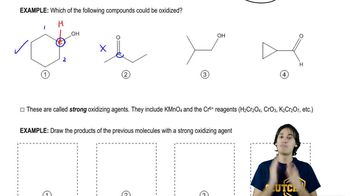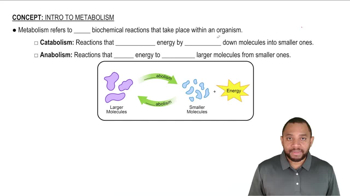Suggest mechanisms for the following reactions, which are similar to the mechanism we saw for lanosterol biosynthesis at the end of Chapter 8.
(b)

 Verified step by step guidance
Verified step by step guidance Verified video answer for a similar problem:
Verified video answer for a similar problem:


 4:34m
4:34mMaster Acid-Catalyzed Epoxide Ring-Opening with a bite sized video explanation from Johnny
Start learning